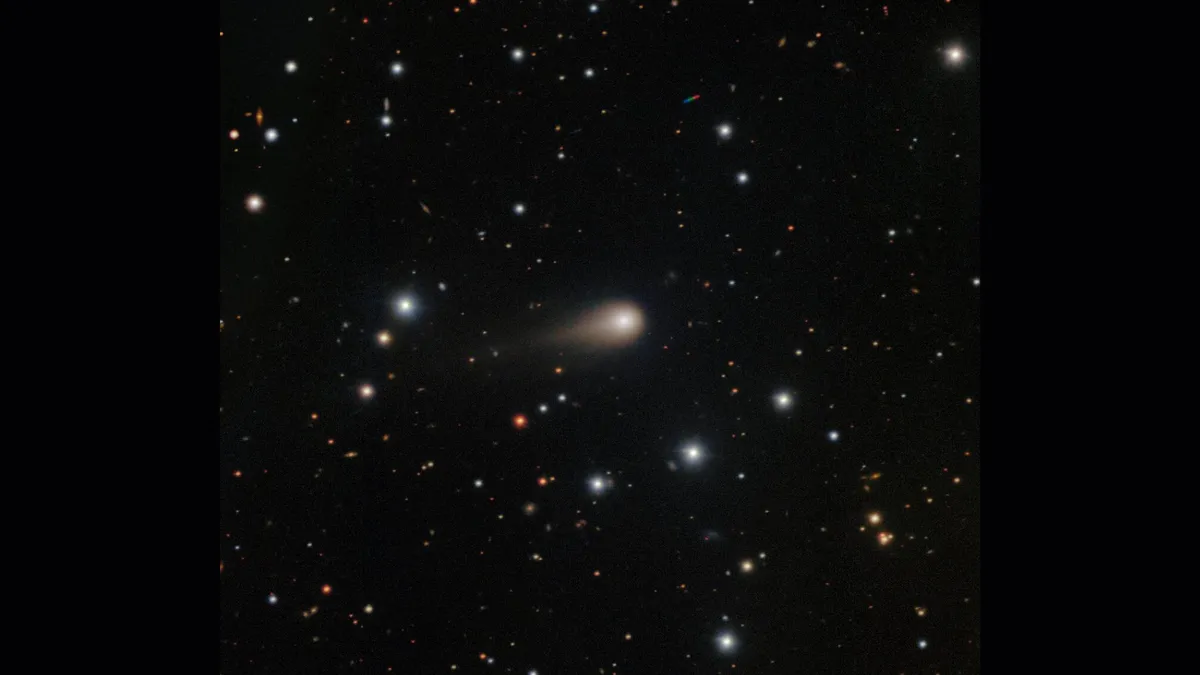
The Europa Clipper spacecraft is on a remarkable journey to Jupiter, and it may soon experience an extraordinary event involving charged particles from the ion tail of the interstellar comet 3I/ATLAS. This prediction comes from two European researchers who have developed a computer program capable of identifying alignments between spacecraft, comets, and the sun. This upcoming event is completely harmless to the spacecraft and presents a rare chance to directly sample materials from a comet that originated from beyond our solar system.
According to Samuel Grant from the Finnish Meteorological Institute, who led this innovative research, we currently possess virtually no data on the interiors of interstellar comets or the star systems that birthed them. The chance to sample the ion tail of comet 3I/ATLAS represents one of the closest opportunities we have to obtain direct samples from such distant objects in our galaxy. However, this unique research opportunity is threatened by various factors that could hinder the Europa Clipper from detecting these charged particles.
One of the primary challenges is the ongoing U.S. government shutdown, which affects the operational status of the Europa Clipper. Currently, the spacecraft is in cruise mode, and not all of its scientific instruments are activated. The critical alignment between the Europa Clipper, the comet, and the sun is expected to occur between October 30 and November 6. If the government shutdown continues, it remains uncertain whether scientists will be able to activate the spacecraft in time to make these essential measurements.
If the Europa Clipper successfully makes these measurements, it will provide valuable insights into the composition of 3I/ATLAS. This will allow scientists to compare the materials found in this interstellar comet with those from comets within our own solar system. Comets are fascinating because they act as time capsules, preserving material from their formation billions of years ago. As comets approach the sun, they outgas and shed particles, creating their iconic tails.
Comets possess two distinct tails: a dust tail and an ion tail. The dust tail is formed from particles and dust that are lifted off the comet's surface or outgassed due to rising temperatures as the comet nears the sun. The heat causes pockets of gas beneath the surface to expand, leading to an explosive outgassing. The dust tail, which is the more visible of the two, follows the comet's trajectory. In contrast, the ion tail points directly away from the sun, propelled by the solar wind, which carries ions from the sun itself.
Between October 30 and November 6, the Europa Clipper will be ideally positioned to potentially intercept ions from the solar wind at speeds of several hundred miles per second. Grant and Geraint Jones, a researcher from the European Space Agency, utilized their Tailcatcher program to predict this ion tail crossing. This program tracks the movements of solar wind material and can ascertain the path taken by ions from the sun to the spacecraft, providing a clear understanding of how they may interact with the comet's tail.
One question that arises is how scientists will differentiate between ions from the solar wind and those from the comet. Cometary ions can be distinguished based on their chemical compositions, with cometary ions typically containing significant amounts of heavier species, particularly water-group ions, unlike the lighter protons and helium of the solar wind. Additionally, the presence of cometary ions can slow down and deflect the ambient solar wind flow, creating a unique signature.
For the Europa Clipper to successfully detect the charged particles, several factors must align perfectly. The solar wind must be flowing in a favorable direction, as it doesn’t always travel in a straight line. Moreover, the solar wind must be strong enough at the right time to transport the heavier ions all the way to the spacecraft. 3I/ATLAS will reach perihelion (its closest point to the sun) on October 29, bringing it to a distance of 126 million miles (approximately 200 million kilometers) from the sun, which may enhance its activity and broaden the ion tail.
While the Hera spacecraft from the European Space Agency will also be in a position to intercept solar wind packets containing cometary ions during this timeframe, it does not have the instruments necessary to measure the solar wind's charged particles and magnetic field. In contrast, the Europa Clipper is equipped for such measurements, given its mission to study Jupiter’s magnetic and radiation environment and its effects on Europa.
Even if the Europa Clipper misses this unique opportunity, the Tailcatcher program has a history of successful predictions, including a previous detection of ions from comet C/2019 Y4 in 2020. The potential for tail crossings continues to add a fascinating dimension to comet studies. Looking ahead, the European Space Agency plans to launch the Comet Interceptor mission in 2029, which aims to closely sample an interstellar or long-period comet, thereby expanding our understanding of these intriguing celestial bodies.